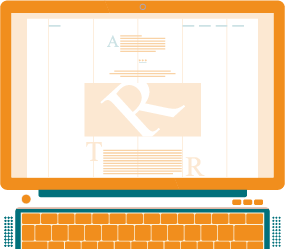Risk Management Blog
Content for Risk
Management Professionals

February 14, 2019
The Fall of Toys ‘R’ Us and Sears: How to Evaluate Competition and Risk
The year 2018 saw both Toys ‘R’ Us and Sears become the latest victims of a changing and competitive retail segment.
competitive retail segment.
On June 29, 2018, Toys ‘R’ Us shut down all its remaining U.S. locations after 70 years of operations. On October 15, 2018, Sears filed for Chapter 11 bankruptcy and, in the months since, has closed or announced closings of hundreds of stores. What fundamental problems did these contractions expose in how organizations handle risk management?
By Identifying and assessing the competitive landscape and an industry’s trends, organizations can evaluate the competition and risks associated with the status quo vs. the risks of innovation. In doing so, your business can learn how to bob and weave with competitive risks rather than just rolling with the punches like Toys ‘R’ Us and Sears.
The Paradigm Shift to Digital
Toys ‘R’ Us and Sears both took big risks by trying to compete with Walmart, Target and Home Depot on price. At the same time, the paradigm shift sparked by Amazon, Zulily, Zappos, Wayfair and other online-only retailers created a new form of competition that many brick-and-mortar stores couldn’t keep up with.
In trying to compete with Amazon, Toys ‘R’ Us took a high level of risk, hiring former University of Michigan athletic director David Brandon as the new CEO in 2015, and then investing in digital infrastructure. The company attempted to upgrade online sales, renovating stores and introducing augmented reality into the shopping experience. Those risks proved disastrous – a large investment with little payoff because consumer behaviors had already changed.
Risks Associated with the Status Quo and Innovation
It’s ironic that the original mail-order business – Sears – was outdone by a company offering the convenience of home delivery. Sears failed to identify the risk of maintaining the status quo. It failed to evolve from a brick-and-mortar stalwart back to a delivery-based business.
Instead of innovating toward digital, the company spent the last few decades trying to go after female shoppers with the "Softer Side of Sears." It also diversified its business, adding on insurance, banking, investments and real estate, but these moves were too confusing for shoppers. Instead, it could have identified its opportunity by standing out with its signature appliances and tools.
Having the right focus is important for companies looking to grow. That means reducing risk
Transforming Your Business through Managing Competitive Risk
In the wake of the failures of Toys ‘R’ Us and Sears, the retail industry is under pressure. If initiatives, like pushing toward digital infrastructure or targeting new demographics, prove ineffective, a company can face setbacks.
So how to avoid these kind of setbacks when undertaking a change in your business? Most business-transforming projects fail because of people and process issues, so proper planning and risk management within those transforming projects is a must.
This means anticipating the hard questions:
Many organizations don’t review their processes and investments in the context of their risk management tools and that can leave them vulnerable. Utilizing a proper enterprise risk solution, however, can help you ascertain risks that might be strategic game changers today, where additional risks might arise tomorrow and your organization’s existing risk management capabilities.
Contact Us
Does your enterprise utilize risk assessments for major projects? If not, consider the fallout from a project failure. Fortunately, Procipient® makes risk management easy, streamlining the process with its user-friendly utility and fast implementation times. The ERM-GRC software can help a company identify, anticipate and control the kinds of risks that proved fatal for Toys ‘R’ Us and Sears. To see how enterprise risk can be managed with valuable insights, request a demo of Procipient® today.